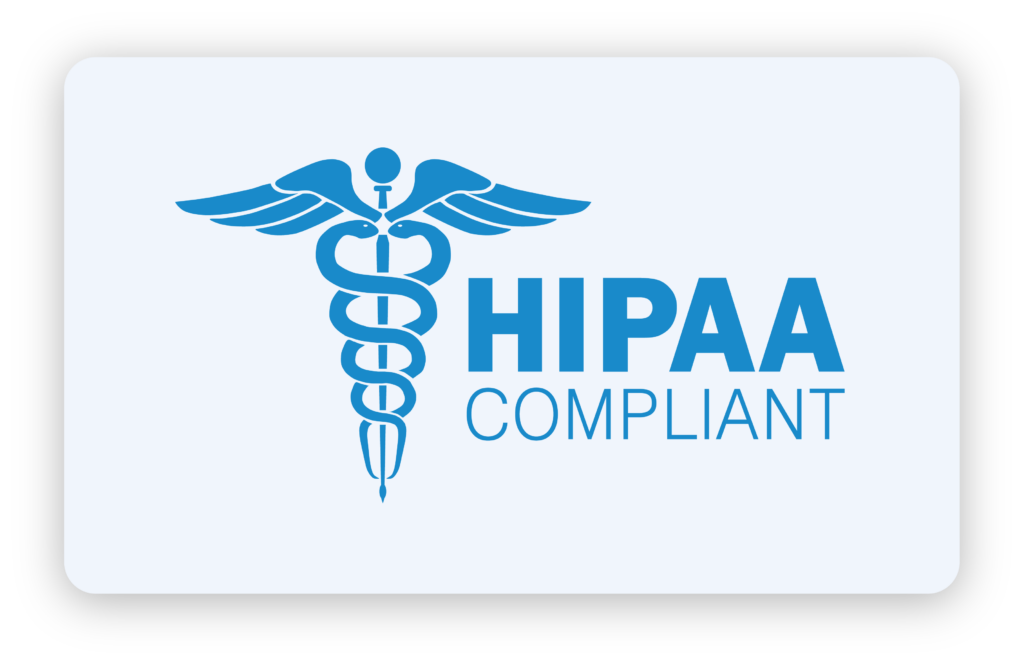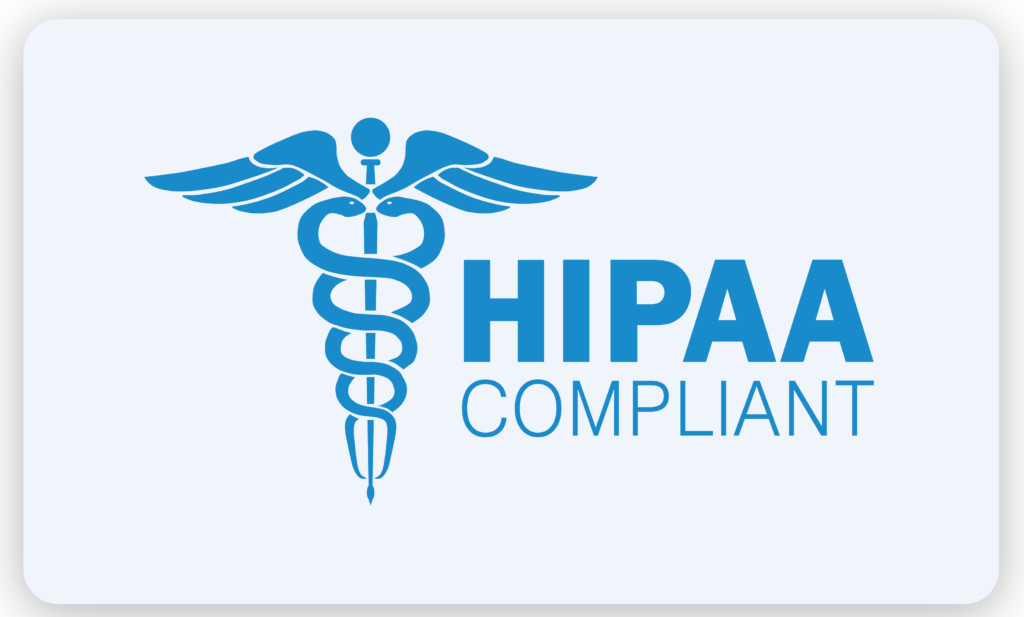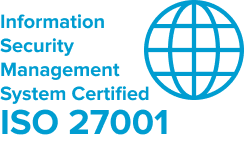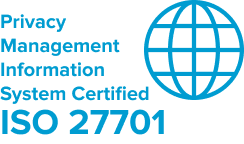Healthcare
Your Guide to Developing a Business Strategy for White-Label Healthcare and Pharmaceutical Track & Trace Platforms
- By HealthMatriX Team
- No Comments
16 Apr

This is the second blog post for HealthMatriX’s White-Label Healthcare and Pharmaceutical Track-and-Trace Platform Series.
Counterfeit medicines are on the rise and more than 6,615 pharmaceutical crime incidents were in 2022, up 10 percent from the year before and the peak figure since 20 years ago.
Traceability is an essential element of any supply chain, but it carries even greater significance in clinical settings where the consequences of failures can be gravely serious for patients. The ability to quickly and accurately identify the origin, production details, supplier involvement, delivery recipient, destination, and timing of products provides critical safeguards against clinical errors and enables prompt remedial measures in the unlikely event of an error.
By integrating traceability with unique identification, we can effectively prevent errors, improve quality, increase efficiency, and reduce costs. It is, therefore, paramount that we adopt traceability as a core component of our supply chain management practices.
White-labeling presents businesses with a valuable opportunity to enhance their offerings with minimal financial investment. Given the constant evolution, counterfeit attacks, and heightened competition in the healthcare and pharmaceutical sector, integrating white-label solutions can prove to be a strategic move, allowing for the quick launch of new products.
Despite these benefits, businesses are often confused about what their business plan should be if they use a white-label solution, although it is necessary for selling a track-and-trace platform without development, deployment, or maintenance.
This confusion is understandable because if the white-label providers develop a track-and-trace platform, what will be their role in access and user management? To answer this and similar questions, this guide serves as a valuable partner for businesses wanting to develop a secure and successful business plan for white-label healthcare and pharmaceutical track-and-trace platforms.
When Should Businesses Consider White-Label Track & Trace Solution?
1. Businesses Want to Scale Their Services for Clients
To solve most of your clients’ business problems without spending a lot of money and investing time, you can employ white-label solutions.
2. Businesses Want to Enter the Market with a Unique Product
White-label solutions are highly customizable, and if you want to enter a market quickly without experiencing market saturation, you can employ a white-label solution and add some of your unique features to it.
3. Businesses Want to Expand their Client Portfolio
Big clients prefer a solution that solves all of their problems related to one specific area. To attract industry leaders and make them your clients, you need a product with a USP. One specific solution to getting big clients is employing a white-label solution and customizing it with your brand identity and your business’s unique features.
A Step-by-Step Guide to Develop a Business Strategy with White-Label Healthcare and Pharmaceutical Track & Trace Platform
If you have decided to sell your clients a white-label Healthcare and Pharmaceutical track & trace platform, you should implement the following processes for efficient workflows:
1. Decide The White-Label Service Provider
The first step is to choose a responsible white-label solution provider. Some factors that should help you decide between a white-label service provider are as follows:
- Maintenance and Support: The service provider ensures ongoing support and maintenance for the white-label solution.
- Data Storage Flexibility: The platform allows data storage in the end-user's country for compliance.
- Unauthorized Access Prevention: The service provider implements measures like data-label classification and strict server processes.
- Cybersecurity Assurance: The provider conducts frequent cybersecurity assessments for robust protection of the track-and-trace platform.
- Flexible Pricing: The provider offers various pricing models to suit different business needs.
- Compliance Protocols: The provider adheres to strict data protection regulations for platform compliance.
2. Understand The White-Label Service Provider’s Access Protocol Process
You should try to understand what is the standard process of the white-label service providers to make a white-label solution for you. This is because developers and other IT professionals may know the code and it might be compromised if no protocols are employed.
To combat this, consider if the white-label service provider follows these strict protocols, that HealthMatriX follows for its white-label track-and-trace platform:
- Developer Access Control: Our white-label solution developers are provided with exclusive access to source code repositories and development environments. This ensures a focused environment for writing, testing, and debugging code. Access is strictly managed through robust Identity Access Management (IAM) systems, ensuring that only authorized personnel can perform assigned tasks and view permitted data. Moreover, developers receive comprehensive documentation and support channels to streamline their development processes.
- Deployment Pipeline Access Control: The deployment pipeline is a critical component in guaranteeing the quality of the code launched onto the production server. Our best practices dictate a three-stage development process.
- Production Server: Access to this server is strictly limited to designated personnel, typically referred to as the “Release Manager” or “Release Lead.” It hosts the application code utilized by our track & trace platform users.
- Staging Server: Here, the quality assurance (QA) team rigorously tests new features and fixes, identifying and addressing any issues before deployment. Automated test suites ensure that all features meet predefined quality standards before deployment to the Production Server.
- Developer Environment: New code and features are developed in a controlled and monitored local environment accessible only by named developers. After thorough testing and code review, the code is pushed to a secured cloud-hosted server, known as the Staging Server.
- Local Testing Server Access Control: Developers leverage monitored dedicated desktops and isolated environments on their machines or local networks for local testing. Access to these environments is tightly regulated through strict authentication and user authorization mechanisms.
- Staging Server Access Control: Access to staging servers, crucial for pre-production testing, is limited to authorized developers. Role-based access control (RBAC) mechanisms enforce permission-based role and access management, ensuring the integrity of the staging environment.
- Isolation of Production Server: To safeguard the production environment from unauthorized access or modifications, developers are explicitly prohibited from accessing the production server. Access is restricted to the "Release Manager" or "Release Lead" only.
- Data Encryption and Privacy: Sensitive data, including customer information and transaction records, is protected using data encryption techniques to ensure confidentiality and integrity. Encryption is applied both at rest and in transit, mitigating the risk of unauthorized access or data breaches.
- Isolated Database: Customer data is stored in an isolated database environment, separate from other system components, to prevent unauthorized access or tampering. Access to the database is strictly controlled through authentication and access control mechanisms.
- Principle of Least Privilege: Access to data and systems is governed by the principle of least privilege, ensuring that individuals are granted access only to resources essential for fulfilling their job responsibilities. Granular access controls and continuous compliance checks minimize the risk of unauthorized access and potential security breaches.
- Architectural Separation and Role Segregation: Our track-and-trace platform employs architectural separation techniques to segregate customer data from the source code, enhancing data security. Role segregation ensures that access to critical platform components is restricted based on predefined roles and responsibilities.
- Documented Software Support: Comprehensive documentation of all instances where IT professionals access the code is maintained, serving as a vital component for compliance checks and audit trails. Access logs and audit trails are routinely monitored and reviewed to ensure adherence to security policies and regulatory requirements.
- Strong Privacy Policies: We uphold strong privacy policies to ensure that system integrators and their customers' data remain strictly protected. Data access protocols are carefully separated, preventing unauthorized access to end customers' data.
- Independent Storage and Servers: Each organization, project, or customer of a system integrator is provided with independent storage, ensuring data security and privacy. Our track-and-trace platform offers independent, segregated servers to end customers upon request.
Through our rigorous access management process, we guarantee the security and integrity of our white-label track-and-trace solution, maintaining trust with users and preventing unauthorized access.
3. Provide Your Requirements for the White-Label Track-and-Trace Platform:
The next step to getting a white-label Healthcare and Pharmaceutical track-and-trace platform is to articulate your needs and the features needed. Of course, there will be the basic version of the track-and-trace platform, which should include the following service offerings:
- A Track and Trace platform
- Drug import & export raw material management system
- Products’ integrated safety analysis management system
- Product history documentation management system
- Logistics & e-Logistics Management System
- Item level tracking solution
- Retail management system
- Inventory management solution
- Warehouse management solution
- AI-powered Consumer behavior analysis and reporting system
- AI-powered geolocation tracking system
- AI-powered fraud detection system
- Product management and landing management systems
- End customer authentication system
- Order management system
- Customer relationship management system
- User permission management system
Through our rigorous access management process, we guarantee the security and integrity of our white-label track-and-trace solution, maintaining trust with users and preventing unauthorized access.
4. Test the Final Track-and-Trace Platform
After the white-label service providers develop a track-and-trace platform per your needs, you should test the platform in the following ways:
Testing a white-label Healthcare and Pharmaceutical track-and-trace platform involves ensuring its functionality, security, and usability. Here’s a tailored approach to testing such a solution:
1. Functionality Testing:
- Verify that the platform accurately tracks and traces products through the supply chain.
- Test authentication features to ensure products can be verified as genuine.
- Confirm that the platform supports white-labeling by testing rebranding capabilities.
2. Security Testing:
- Assess the platform's security measures, such as encryption protocols for data transmission and storage.
- Conduct Penetration Testing to identify potential vulnerabilities in the authentication process.
- Verify user access controls to prevent unauthorized access to sensitive data.
3. Usability Testing:
- Evaluate the user interface for intuitiveness and ease of navigation.
- Test the platform across different devices and screen sizes to ensure responsiveness.
- Gather feedback from users to identify any usability issues or areas for improvement.
4. Performance Testing:
- Evaluate the platform's performance under varying loads.
- Test response times for Healthcare and Pharmaceutical requests to ensure timely responses.
- Monitor system resources to identify any performance bottlenecks.
5. Integration Testing:
- Test integrations with existing systems or databases to ensure seamless data exchange.
- Verify compatibility with barcode scanning devices or other hardware used in the supply chain.
6. Compliance Testing:
Ensure that the platform complies with relevant regulations and standards, such as FDA regulations for pharmaceutical products or GS1 standards for product identification.
7. Documentation and Training:
- Review documentation provided with the platform to ensure clarity and completeness.
- Provide training sessions for users on how to effectively use the platform for Healthcare and Pharmaceutical and track-and-trace purposes.
8. End-to-End Testing:
Conduct end-to-end testing to simulate real-world scenarios, including product serialization, shipment tracking, and authentication at various points in the supply chain.
9. Feedback and Iteration:
- Gather feedback from stakeholders, including users and administrators, to identify areas for improvement.
- Iterate on the platform based on feedback and testing results to enhance its effectiveness and usability.
After the white-label track-and-trace platform meets your requirements and functions securely, accurately, and efficiently, you should start marketing the platform under your brand identity to your existing clients and prospects.
5. Clarify Roles for Customer Support and Maintenance Services
It is important to establish communication with the white-label service provider in advance to clarify the roles and responsibilities of both parties in terms of handling customer support and software maintenance services.
Typically, the white-label service provider is responsible for providing customer support related to the software and any assistance required by customers under your brand identity. They also handle regular maintenance, periodic updates, and backup systems. Additionally, they are responsible for providing customer engagement, logistics services, warranty product registration management, and product recall management under your brand identity.
This means that they are responsible for all the back-end processes related to the track-and-trace software.
6. Develop a Pricing Strategy for your Customers
To establish the most suitable pricing structure for our white-label track-and-trace platform, we need to take into account various factors, including:
- The monthly expenses paid to the white-label service providers.
- The size of the user base utilizing the platform.
- Additional features or customizations requested by the customers.
- The extent of support and maintenance services bundled into the subscription.
- Any supplementary services or integrations provided alongside the platform.
- Contract terms and the duration of the subscription.
- Potential volume discounts based on bulk usage or the number of subscriptions purchased.
- Competitive pricing in the market for similar track-and-trace solutions.
By carefully considering these factors, we can ensure that our white-label track-and-trace platform remains both cost-effective and competitive in the market.
How HealthMatriX Can Scale Your Business
HealthMatriX offers a streamlined process to help scale your business effectively, particularly in scenarios where NFC tags, RFID tags, or a combination of both are required. Here’s a step-by-step guide on how HealthMatriX can assist in this process:
- Understanding Customer Needs: Begin by comprehensively understanding the requirements of the customer. Your customer might require sensors, NFC tags, RFID tags, or a combination of both. He also needs a platform for tag management quickly and that’s where we help system integrators. We provide our white-label track-and-trace platform quickly to the system integrator.
- Rapid Deployment: HealthMatriX enables rapid deployment of out-of-the-box white-label track-and-trace solutions. Within a week, a basic version of the required platform can be provided. This ensures that system integrators can promptly conduct sales demos, facilitating quicker decision-making processes for potential clients.
- Customization Options: HealthMatriX offers flexibility in customization. If the customer or system integrator requires specific modifications to the platform, these can be discussed and implemented efficiently. This ensures that the solution aligns precisely with the customer’s needs.
- Collaboration with System Integrators: Track-and-trace solutions rely heavily on electronic devices like NFC tags, RFID tags, barcode scanners, IoT sensors, and managed devices. HealthMatriX supplies these essential electronic components to system integrators. The system integrators maintain their inventory of these devices in their warehouses and distribute them to end customers as needed. If system integrators deplete their stock, they can easily request additional devices from HealthMatriX, which promptly fulfills their requests.
- Integration Capabilities: HealthMatriX’s platform allows seamless integration with various ERP systems and other enterprise-grade software solutions. This integration capability enables enhanced data exchange and management, facilitating smoother operations for the end customer.
- Out-of-the-Box Solutions: HealthMatriX provides ready-to-use platforms that can be easily deployed by system integrators. These solutions are equipped with essential features and functionalities, reducing the need for extensive development time and costs.
- Opportunities for System Integrators: By offering a platform that is ready for integration, HealthMatriX creates opportunities for system integrators to add value to their services. Integrators can earn revenue by incorporating additional customizations and integrations, thereby expanding their service offerings.
- Ownership of Code: HealthMatriX maintains ownership of the code, ensuring the integrity and security of the platform. This provides reassurance to customers and system integrators regarding the long-term sustainability and support for the solution and platform.
White-Label Track-and-Trace Platforms are the New Norm:
White-label track-and-trace platforms have become essential tools for businesses seeking cost-effective, efficient solutions. With 75% of web and cloud-based businesses using white-label solutions, they offer a competitive edge and facilitate market entry. However, navigating the adoption process requires careful planning.
This guide outlines key steps, including selecting a reliable provider, understanding access management, articulating requirements, and rigorous testing, so businesses can confidently implement white-label solutions, ensuring functionality, security, and competitiveness.
As demand for customizable solutions grows, white-label track-and-trace platforms will continue to play a pivotal role in business strategies, driving growth and success in dynamic markets.
Ready To Scale Your Business With a White-Label Healthcare and Pharmaceutical Track & Trace Platform?
Reach out to HealthMatriX today and learn how we can develop a highly scalable, cyber-secure, flexible, and customizable track-and-trace platform for you and provide you continuous software support, so you can focus on marketing and selling the platform to your customers with confidence.
Contact us to start your journey to exponential business success!
Read the third blog post for HealthMatriX’s White-Label Healthcare and Pharmaceutical Track-and-Trace Platform Series here.
About HealthMatriX Technologies Limited
HealthMatriX Technologies Limited provides AI-enabled anti-counterfeit QR codes, NFC/UHF tags, and cutting-edge technology development solutions to protect the products and documents for the healthcare and life science sectors. HealthMatriX also provides tamper-evident physical products, highly advanced AI-automated software integrations, and white-label solutions. Our cybersecure, data-protected, standardized, and innovative solutions help safeguard healthcare brands, products, solutions, and documents from unauthorized reproduction and duplication.
Recent Posts
About Us
Contact Info
HealthMatriX Technologies Limited
Unit 8, 18/F, Workingfield Commercial Building, 408-412 Jaffe Road, Wanchai, Hong Kong +852 2523 9959HealthMatriX Technologies Pte. Ltd.
192, Waterloo Street, #05-01 Skyline Building Singapore 187966© 2022 HealthMatriX Technologies Pte. Ltd. All rights reserved.

HealthMatriX provides AI-enabled anti-counterfeit QR codes, NFC/UHF tags, and cutting-edge technology development solutions to protect the products and documents for the health sector. HealthMatriX also provides tamper-evident physical products highly advanced AI-automated software integrations and white-label solutions.






About Us
Contact Info
HealthMatriX Technologies
[email protected]HealthMatriX Technologies
Unit 8, 18/F, Workingfield Commercial Building, 408-412 Jaffe Road, Wanchai, Hong Kong+852 2523 9959
© 2025 HealthMatriX Technologies. All rights reserved.













